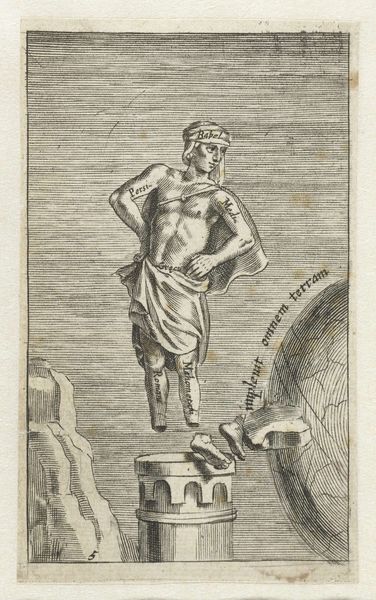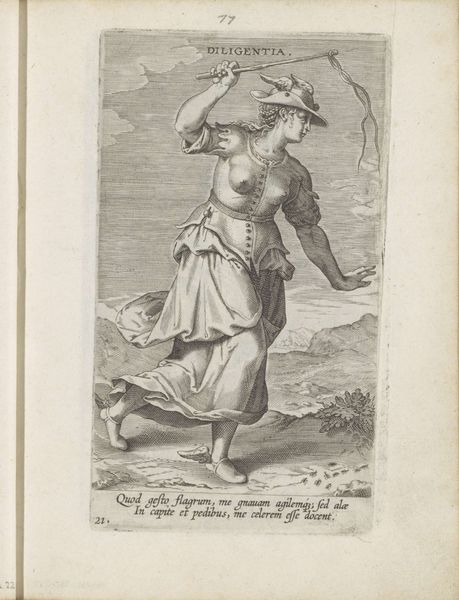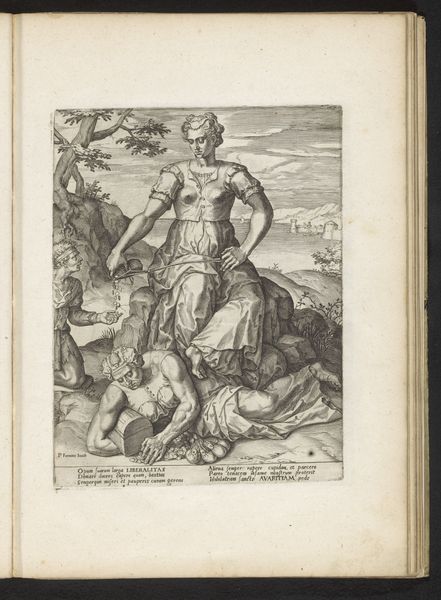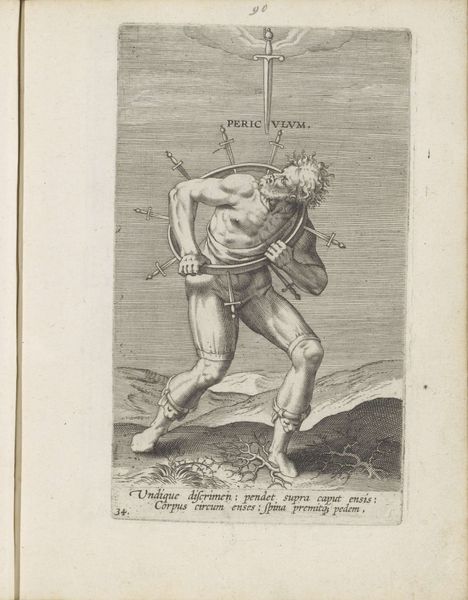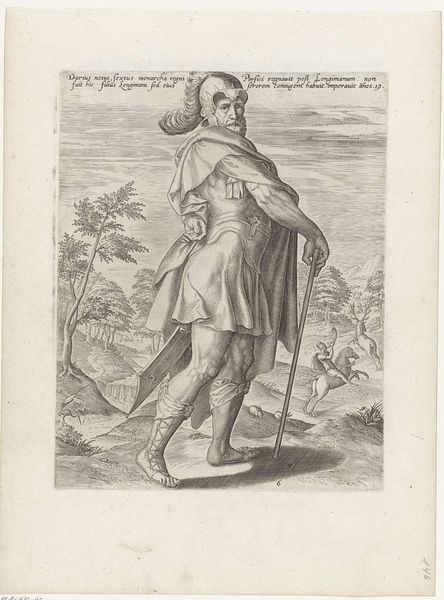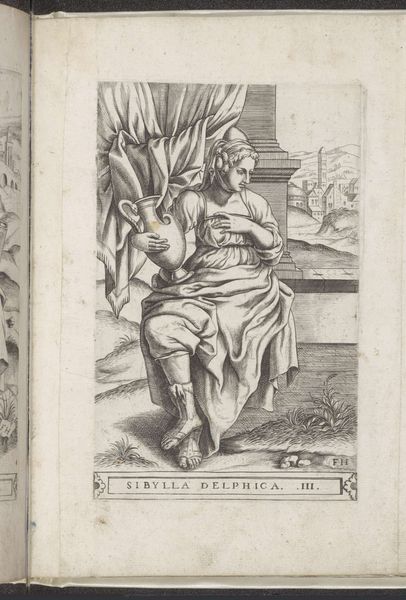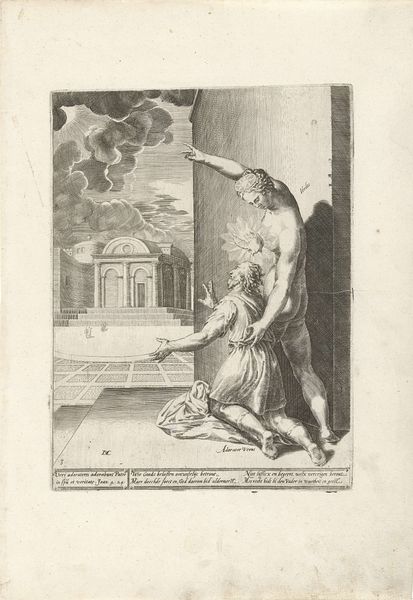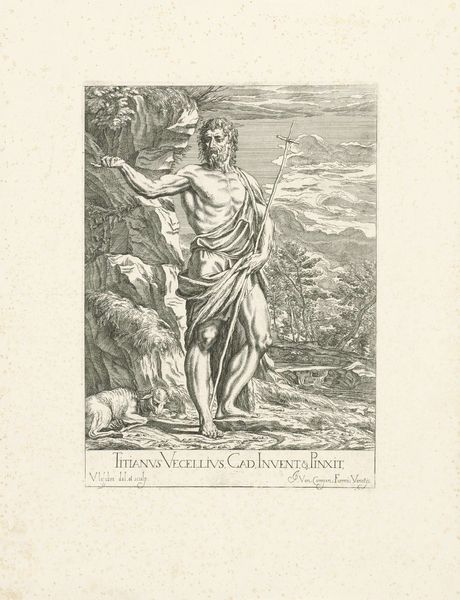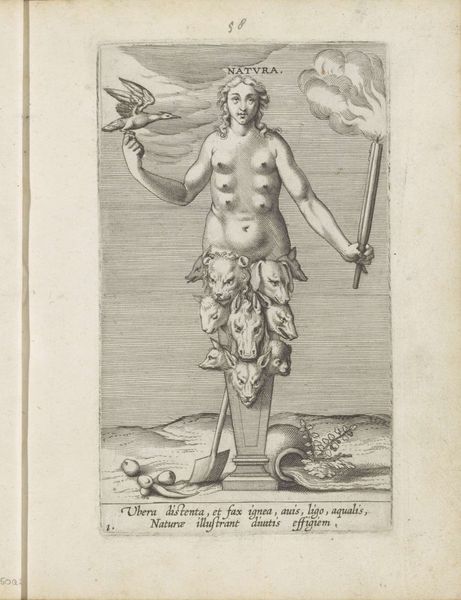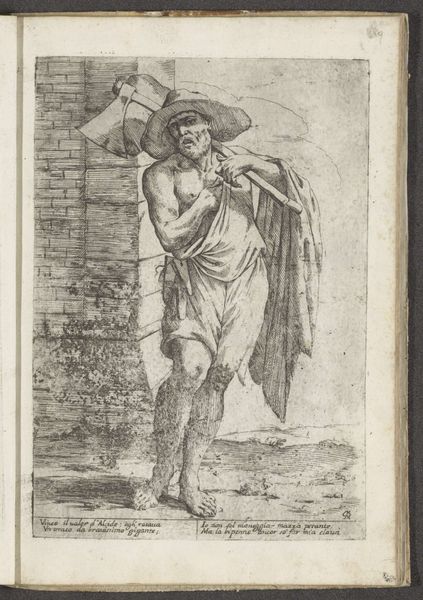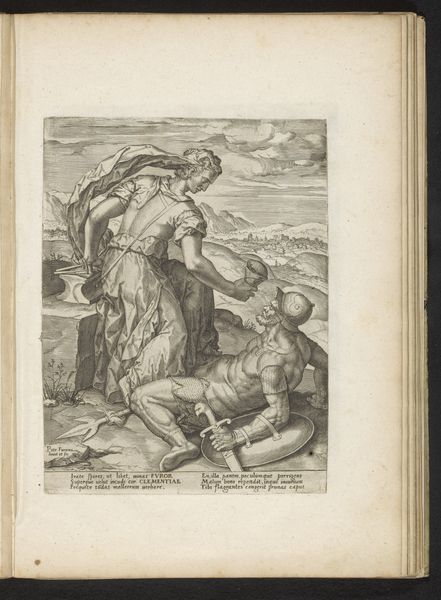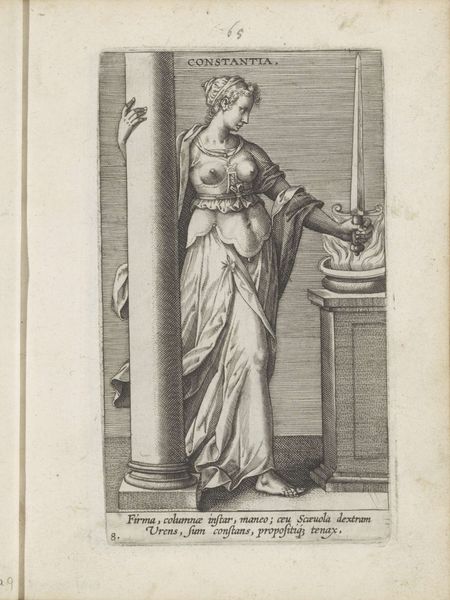
print, engraving
#
allegory
# print
#
mannerism
#
figuration
#
history-painting
#
engraving
Dimensions: height 151 mm, width 92 mm
Copyright: Rijks Museum: Open Domain
Editor: This is Philips Galle's "Arbeid," a print from around 1585 to 1590. It feels quite imposing, even though it's a small engraving. The central figure has a lot of texture, especially with that sort of fur skirt, and his hands draw my eye. What strikes you most when you look at this? Curator: Initially, I’m drawn to the stark contrast between the figure and the background. Observe the lines – they're precise and create a detailed image. Galle masterfully employs chiaroscuro to sculpt the figure, giving it volume and presence despite being a print. The positioning, almost wedged between planes, forces an examination of its internal structure and relationship with its spatial confines. What function do you perceive in this construction? Editor: I suppose it draws your eye to the figure; there's nowhere else to go, compositionally. You mentioned the details of the lines themselves, is there anything beyond their skill that they might suggest? Curator: Indeed. Consider the lines surrounding the figure, juxtaposed against the honeycomb and the ant colony. The contrasting visual textures subtly suggest differing modes of being. The smoothness in some regions against the almost frantic cross-hatching in others suggests tension and energy—a physical manifestation of ‘Arbeid’ or labor. Notice how the lines are denser around areas like the brow and clenched fist of the figure, suggesting a focal point of concentrated effort. Is the allegory immediately legible, or is there an opacity requiring interpretation? Editor: Now that you point it out, that's much more apparent to me. I assumed the textures were primarily for contrast. Seeing that these choices guide the viewer through the artist's idea is great. Curator: Exactly! Analyzing line, texture, and form grants deeper meaning, illuminating Galle’s visualization of work, both the act and its symbolic value within its own internal artistic logic. I trust you’ll look at similar pieces with new eyes from now on?
Comments
No comments
Be the first to comment and join the conversation on the ultimate creative platform.
